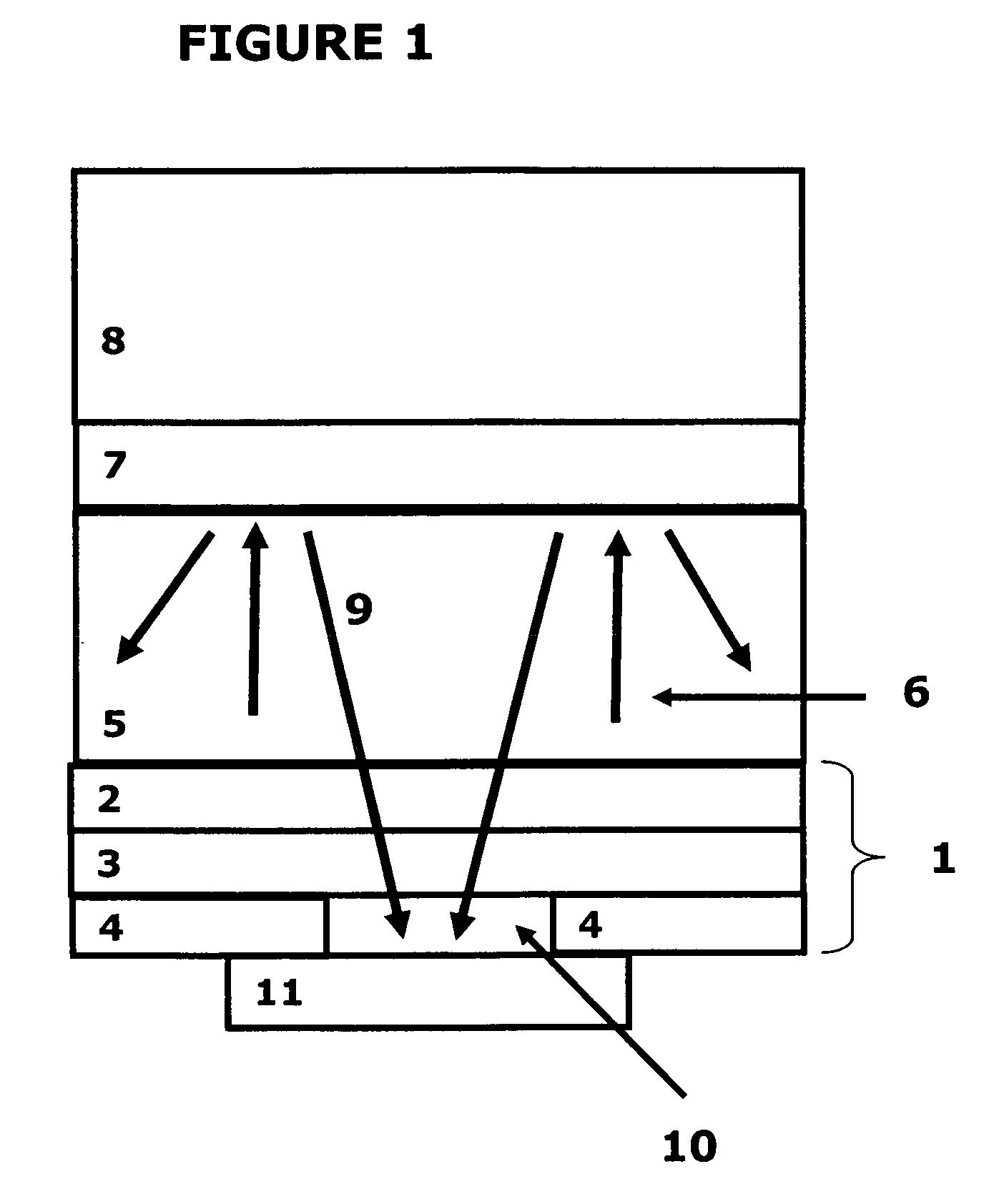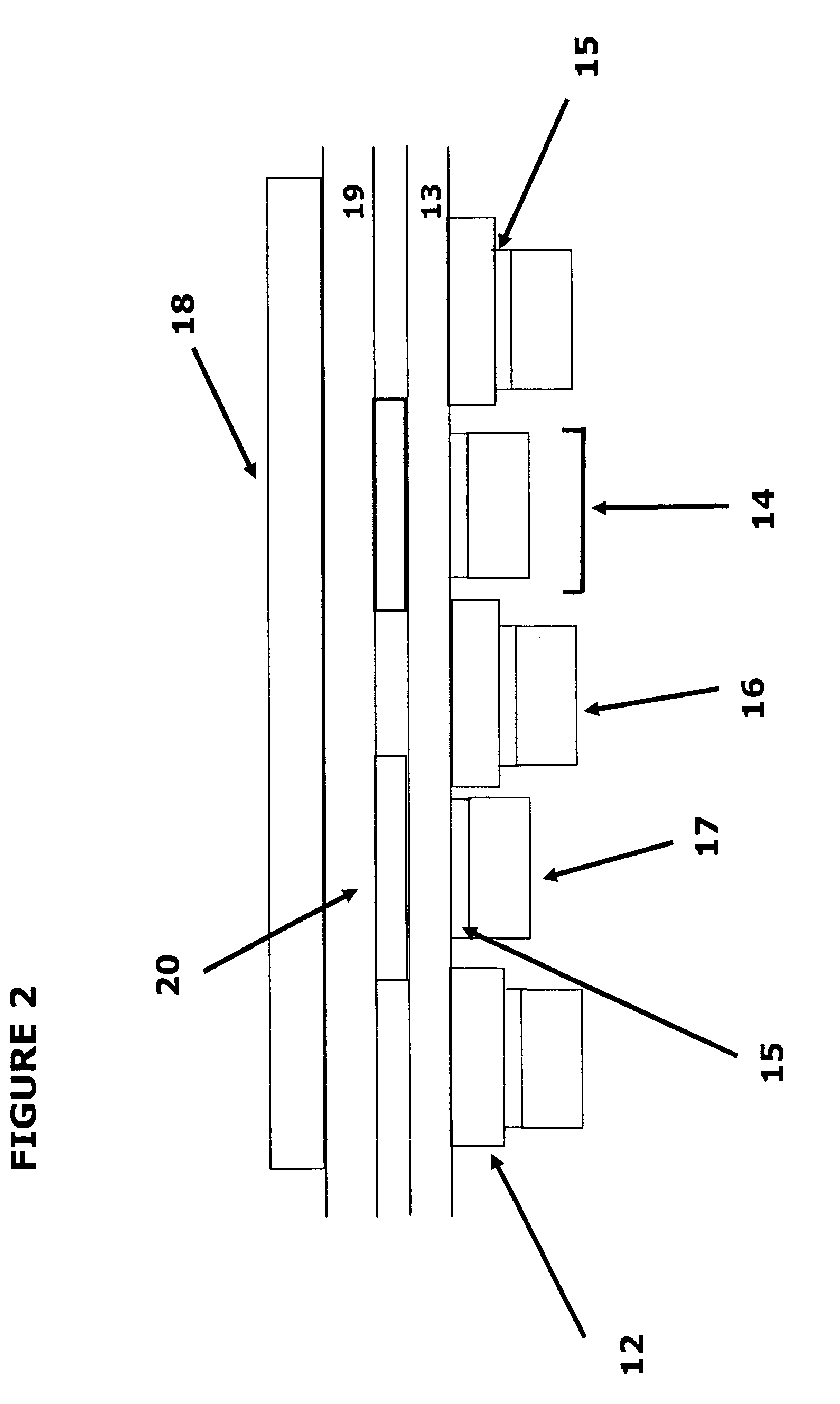Integrated thin-film sensors and methods
a technology of integrated thin-film sensors and sensors, applied in the field ofluminescent chemical and biological sensors, can solve the problems of long response time, increased complexity, size and cost, and long response time of electronic sensors, and achieve the effect of compact field-deployable devices
- Summary
- Abstract
- Description
- Claims
- Application Information
AI Technical Summary
Benefits of technology
Problems solved by technology
Method used
Image
Examples
example
Manufacture of a Preferred Structurally Integrated Sensor
[0041]This exemplary OLED detector comprises a PIN-type device, with a semi-transparent contact deposited on the p-layer. The first layer deposited may be the semitransparent contact, for example ITO. The layer is deposited using, for example, sputtering in Ar atmosphere from appropriate ITO targets. This layer is followed by the deposition of a buffer layer, for example, zinc oxide (ZnO), whose function is to prevent interaction between the ITO layer and the following p-layer. The thin ZnO layer, which may be doped, for example with aluminum, is deposited using sputtering. The p-layer is deposited on the ZnO layer using PECVD techniques, using either RF glow discharge techniques, or ECR deposition techniques. The gases used for depositing the p-layer, which is made from an amorphous silicon-carbon alloy, are silane, hydrogen, methane, helium, and diborane, with diborane serving as the dopant. The ratio of methane to silane is...
PUM
| Property | Measurement | Unit |
|---|---|---|
| thickness | aaaaa | aaaaa |
| thickness | aaaaa | aaaaa |
| thickness | aaaaa | aaaaa |
Abstract
Description
Claims
Application Information
 Login to View More
Login to View More - R&D
- Intellectual Property
- Life Sciences
- Materials
- Tech Scout
- Unparalleled Data Quality
- Higher Quality Content
- 60% Fewer Hallucinations
Browse by: Latest US Patents, China's latest patents, Technical Efficacy Thesaurus, Application Domain, Technology Topic, Popular Technical Reports.
© 2025 PatSnap. All rights reserved.Legal|Privacy policy|Modern Slavery Act Transparency Statement|Sitemap|About US| Contact US: help@patsnap.com



